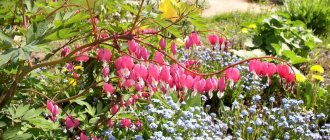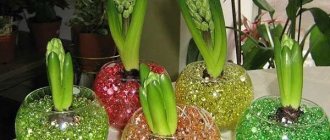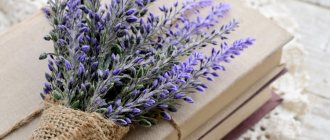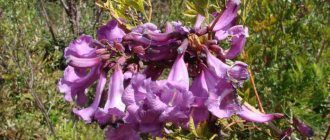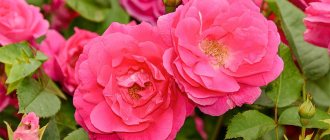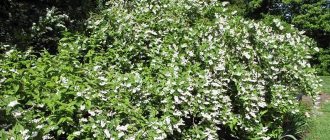In order for peat to benefit your garden, you need to know, firstly, some of its features. Secondly, before using peat, it is necessary to determine the type of soil on the site. Thirdly, this rock must also be introduced into the soil correctly.
Due to its many beneficial properties, peat is used in many areas. Its main use is as fuel. In addition, bedding for animals is made from it and added to feed; thermal insulation blocks are made from peat; Some medications and procedures also cannot do without this mineral. Peat is also used in filters for aquariums; fabrics are already made from it and even whiskey is produced. And finally, peat is used in agriculture. It is the latter option for using peat that interests us most.
Origin and properties of peat
Imagine a body of standing water in which plants and other organisms live. They die and gradually settle to the bottom. This has been happening for many, many, many years. This bottom layer is pressed with water, and this entire process occurs without access to oxygen. This is how peat is formed.
The lower bottom layers are lowland peat, in which the processing process has already been completed. It is a processed substance with a neutral reaction - 5.5-6.5 pH. And the top layer of bottom sediments is high-moor peat, in which decomposition processes are still ongoing, so it has a very acidic reaction - 2.6-3.2 pH.
If you compare low-lying peat with high-moor peat, you can see that processing processes in high-moor peat continue: it is more fibrous than processed low-lying peat, and not as dark. It is very easy to distinguish them. Between these two layers there is an intermediate or middle peat of a slightly acidic reaction.
- Mimulus (lipstick): growing from seeds in the garden
Many gardeners buy peat in large quantities, although a good product is not cheap at all. They scatter it over the beds and tree trunks in anticipation of magical changes, not realizing that peat is not inherently a fertilizer. Yes, it contains useful substances, including nitrogen, but in very small quantities, and besides, peat releases these elements very reluctantly, so it makes no sense to use it as a fertilizer.
What plants is peat suitable for?
The material is used in fields (when growing grain), in vegetable gardens and flower beds. In its pure form, it is most often used for flowers. Hydrangea, Erica, rhododendron, heather love acidic soil, so peat will be useful for them.
Rye prefers acidic soils among grains. Wheat and oats give high yields on acidic soils, but close to neutral (pH 6-7). It is not recommended to apply pure peat to fields; it will not be beneficial. Most often, ready-made industrial fertilizers made on its basis are used here.
Peat-based fertilizers are well suited for garden crops. They stimulate growth and increase the yield of potatoes, cabbage, cucumbers, tomatoes, carrots, sweet peppers, and zucchini. It’s a good idea to use similar fertilizers for greens - lettuce, dill, parsley. It is best to use peat composts or material additionally treated with lime, superphosphate, and potassium chloride in the garden.
Purpose of peat
Peat is primarily used to improve soil structure. Due to its fibrous and clumpy nature, peat introduced into the soil makes it air- and moisture-permeable: it breathes, easily saturates with moisture and retains it. If peat is added to the ground, it is easier for plant roots to develop.
It is not advisable to add peat to humus-rich soil - chernozem, loamy or sandy loam. Poor soils need to be improved. For example, my soil is sandy, and adding peat will enrich it.
But the most important advantage of peat is that thanks to it, organic and mineral fertilizers added to the soil are much better absorbed by plants.
Types of peat substrates by purpose
On sale there are universal ready-made mixtures and substrates intended for specific crops. They differ in composition, acidity, content of nutrients and additional components. Below are the main types of peat substrates:
- Mixture for growing seedlings. In such mixtures, the main volume is occupied by peat, which is needed in the initial stages of crop growth. The peat mixture also contains useful microelements.
- Substrate for strawberries. Strawberries prefer an acidic environment and, taking this into account, special mixtures are created for it. In addition to peat, the substrate contains sand, and this combination allows young plants to quickly take root in a new place.
- Universal peat mixture. The substrate is suitable for growing seedlings and seedlings, as well as adding to the soil to improve its properties (moisture capacity, breathability, etc.).
- Substrate for flowers. The basis for year-round cultivation of indoor plants and potted flowers. Helps improve flowering quality and plant health.
- Mixture for coniferous plants. It is used in nurseries for the production of seedlings of large and small trees.
- Peat mixture for mushrooms. A specially created basis for growing such mushrooms (champignons, oyster mushrooms, chanterelles, etc.).
Ready peat substrate
Peat compost
If you need to improve the soil on your plot or even in one bed, using peat will cost you a pretty penny, but there is a way out: make peat compost. Place a layer of peat at the bottom of the compost heap, and on top of it - a layer of tops, weeds and organic residues from the kitchen, then another layer of peat, and then in the same order.
As a result of rotting, you will get peat compost, which in its nutritional value will be no worse, and maybe even better, than rotted manure. If you do everything correctly, the compost will be loose and the plants will grow well in it. And most importantly, you will receive it in large quantities.
- Broom: growing in the garden, types and varieties
Peat as a fertilizer for vegetable crops
Almost all crops yield good yields when using peat. Tomatoes, sorrel, potatoes, strawberries, strawberries and blueberries react especially favorably to the beneficial substance.
Fertilizing is carried out in the spring, simultaneously with planting potatoes. Peat material mixed with manure is thrown directly into the hole , which allows nutrients to better penetrate to the seeds.
Peat also works well for strawberry growth. The fruits ripen faster and the harvest becomes richer. Planting material has an equally good effect on tomatoes. Fertilizing is carried out once every 14 days using the root or foliar method .
https://ferma.guru/
Peat and moisture
It is almost impossible to spoil the soil or bed with peat. If finances allow you, you can add it to the soil in any quantity. And the norm is four to five buckets per square meter. But there is one important point: the fact is that peat is wet, it is sold in special sealed bags, and under no circumstances should it dry out. Dried peat will take a long time to soak, and this process is not easy, so store it correctly.
The mistake is made by those gardeners who simply scatter peat on the surface: it quickly dries out and loses all its beneficial properties. If you want to mulch a garden bed with peat, you need to scatter it and then work it into the soil.
If you are preparing a bed for planting, spread the peat on it and dig the bed to a depth of 20-25 cm, but if you apply it under the plants, carefully, so as not to damage the roots, mix the peat while loosening it with the soil. And remember to water regularly to keep the peat slightly moist at all times.
How to use peat substrate
Peat is actively used in home gardening and industrial farms. It is intended for growing seedlings, potted plants and adding to the soil to improve its properties. Peat substrate is often used to mulch the soil and insulate wintering plants.
When producing the substrate, it is pressed at a humidity of 40-60%. Therefore, after opening it, the peat needs to be loosened and moistened. For good oxygen saturation, the substrate is left for a day after opening.
Before using the substrate directly, it must be checked for the presence of mold, because during production, harmful pathogens that can cause it get into it.
Also, to avoid problems with peat, all conditions for the development of beneficial organisms should be created. This can be done through the use of biological products: Mycofriend Mycorrhiza, Azotophyte and other bacteria, fungi, amino acids, phytohormones, etc.
My plans for peat
I purchased peat for planting. The planting hole needs to be filled with a fertile mixture so that for the first two to three years, that is, the most important period in their lives, the seedlings can actively and without much effort develop the root system. And peat is one of the most important ingredients of a fertile mixture, especially in areas with sandy soil. Peat makes it easier for roots to penetrate the soil in all directions. I will also need peat for planting seedlings in containers.
I also bought a bag of high-moor, that is, sour peat. I need it for plants that prefer to grow in acidic soil - hydrangeas, heathers, rhododendrons and azaleas. Rather than adding citric acid or special fertilizers to their soil, it is better to add high-moor peat to it.
Study the preferences of your plants, dig a large and wide hole and fill it with a mixture suitable for them. It will not be enough for their entire life, but the most important thing in the life of seedlings is the first 2-3 years; this amount of mixture will be enough for them to develop the root system. And in the future, all the components necessary for growth can be added: loosen the soil or remove its top layer, lay in the necessary components, mix them with the soil and seal them.
I hope you find this information useful and I wish you all the best.
- How to sow heuchera seeds correctly (video)
What are the benefits of peat for a summer cottage?
The use of peat in a summer cottage leads to positive results. The natural substance is used for the following purposes:
- to improve soil composition;
- to prepare the substrate for planting plants;
- as a basis for the preparation of fertilizers;
- as a covering material in winter;
- in preparing peat blocks for seedlings;
- for lawn treatment, mulching and strengthening.
How should peat be applied? The method is ineffective if you simply scatter the raw materials on the soil surface. To achieve maximum effect, peat material is mixed with turf, humus and other components, then 2-3 buckets are added to an area of 1 m² . This fertilizing can be done every year, which will increase the level of soil fertility by 1%.
Simple rules should be taken into account when applying peat fertilizer at a summer cottage:
- The amount of peat substance in the soil composition should not exceed 70%.
- Before use, be sure to mix it with humus and sand.
- Additionally apply mineral fertilizers.
- Use low-lying peat deposits.
- Use on loams and sandy soils.
The result of fertilizing is influenced by the degree of decomposition of peat raw materials, which should not be less than 30–40%. If a low-lying type of material is used, then it must be ventilated and crushed . At the same time, the material should not be overdried; the optimal humidity should be 50–70%.
Application in agriculture
Peat contains a large number of macro- and microelements. In order to make the soil nutritious, loose, and moisture-absorbing, lowland peat processed by nature is added to it.
High-moor peat differs from low-lying peat in that it consists of plant residues located on the surface of the swamp and is fed from the atmosphere. Lowland peat is fed by groundwater.
High-moor peat is called sphagnum peat because it often consists of sphagnum moss. It has a low degree of decomposition and does not have the same content of useful substances as lowland.
To enrich the soil with nutrients, add lowland peat to the soil. At the same time, make sure that it is highly decomposed: the degree of decomposition of organic matter should be more than 40%, then you will be able to grow a rich, high-quality harvest. Peat with a lower degree of decomposition is used as bedding for animals and for making compost.
Application in the national economy
Peat is a type of organic rock that is formed as a result of the decomposition of organic residues. Contains organic and inorganic compounds, which makes it suitable for use in various fields of human activity.
Peat is used in household plots, as well as in medicine, construction and industry.
Peat is used as:
- energy complex in the fuel industry;
- aromatic material in whiskey production;
- component of mud baths, substrate for the propagation of leeches in medicine;
- fertilizer mixed with other soil elements or separately in agriculture, on personal plots;
- aquarium filter;
- bedding in livestock farming;
- adsorbent and filter for environmental disasters;
- thermal insulation material in construction.
We apply mineral fertilizers in the fall
But not only adding organic matter in the fall is good for the soil. To make it more fertile for the new season, in September-October it is worth remembering about mineral fertilizers for the garden. Phosphorus, potassium and even nitrogen (albeit to a much lesser extent) - all these useful substances will help increase crop yields, extend their fruiting period, support metabolism and withstand adverse weather conditions. In addition, this is a good foundation for next spring, when trees and shrubs are in dire need of nutrients.
The time for applying fertilizers in the fall may differ for different plants; before using them, familiarize yourself with the agricultural practices of each specific crop.
Mineral fertilizers are usually applied in liquid form (if in dry form, the plants must be watered after application). They should contain phosphorus, potassium and calcium, which strengthen the immunity of plants and increase their resistance to low temperatures. There are many specially selected compositions and mixtures for various crops - these are simple and double superphosphate, potassium sulfate and potassium chloride, potassium nitrate, potassium monophosphate, nitroammophoska, nitrophoska, ammophos. As a rule, such compositions are even marked on the packaging with the appropriate inscription: “autumn” or “autumn.”
Decomposition rate
The presence of humus in it depends on how much the peat has decomposed. That is, the greater the degree of decomposition, the higher the percentage of structureless particles. This characteristic is the main one when describing qualities and useful properties.
This indicator is determined as a percentage, “by eye” or under a microscope. In the first case, only fresh peat is taken, which has its own natural moisture. Signs by which the degree of decomposition is determined:
- plastic;
- quantity and preservation of plant fragments;
- quantity and color of squeezed water.
The decomposition is divided into 3 groups:
- 30% - highly decomposed. It is pressed through the fingers, leaving individual, large fragments of plant residues in the hands. After squeezing out the water, which is either very little or not at all, it remains plastic. The water is dark brown.
- 20% - moderately decomposed. It is difficult to press through your fingers; there is a lot of plant residue left in your hands. The water that is squeezed out is light brown or brown in color. Pressed peat springs weakly.
- Less than 20% - slightly decomposed. It's impossible to push through your fingers. Plant remains are easily distinguishable. The water is easily squeezed out, its color is yellowish or colorless. Pressed peat is springy and rough on the surface.
More detailed information is provided by the macroscopic method; it was proposed by P.D. Varlygin.
In field conditions, when it is not possible to conduct laboratory tests, the smear method is used. The disadvantage of the method for determining the degree of decomposition is that traces of slightly decomposed soil are difficult to discern. A plus is the quick determination of results.
Methods
There are 2 ways to organize compost, which of them is preferred by the summer resident himself.
Local composting
A layer of peat of 50-60 cm is laid out at the selected location. Then manure of 70-80 cm is laid out in a continuous layer or in heaps. Moreover, the width is made 1-1.5 m less than peat, then the top is covered with a layer of peat, 50-60 cm. Covering the manure from all sides. This method is preferable in winter.
Layer-by-layer
Peat is distributed over a width of 4-5 m, the length of the area is possible, the layer thickness is 50 cm, then a layer of manure is laid, then peat again, and so on several times, the height of the finished compost heap is 2 m. The last layer is necessarily peat.
Peat based fertilizer
Fertilizer manufacturers create fertilizers for plants. They make it for those who cannot make a compost heap on their own. Made in the form of granules, which are added directly to the wells. And liquid fertilizer, which is absorbed much better. It is watered on plants and used as a growth stimulator for seeds.
Peat oxidate
Economical plant nutrition, which is much cheaper than imported analogues. Helps plants accumulate nutrients, improves soil structure, and prevents toxins from entering the plant.
It contains amino acids, monosaccharides, proteins, humic acids, minerals and sulfic acids. When using, be sure to dilute with water.
Peat extract
For manufacturing, a low-lying type is used; using electro-hydraulic processing, a hood is obtained. The fertilizer is very convenient to use. Contains many useful substances. Recommended for areas where there is no need to fertilize the soil.
Comparison
You can understand the value of this mineral in comparison with organic fertilizers:
- humus and manure;
- black soil;
- chicken droppings.
Humus and manure
The main difference is acidity. Peat wins here, so it is used for depleted land. But in most cases, humus is used, since it contains more nutrients necessary for plant growth.
Chernozem
Chernozem contains a large amount of humus, but it also contains more pathogenic bacteria and viruses. Therefore, the summer resident has to choose independently based on what the soil lacks. If you add peat, it must be diluted with sand and perlite and humus.
Chicken droppings
Chicken droppings benefit from the fact that they are more valuable in terms of the composition of nutrients. Some gardeners prefer to use droppings.
We add liming additives in the fall
If in your area there is something wrong with the acidity of the soil, in addition to fertilizers, in the fall you should think about introducing substances that regulate it. Fluff lime (slaked lime), dolomite flour, chalk, ash are excellent means for reducing excessive soil acidity, when many nutrients enter a state in which they are no longer absorbed by plants. And the activity of some beneficial bacteria is inhibited.
They are evenly distributed over the soil surface without mixing to depth (dig beds with such additives should only be done on extremely heavy clay and loamy soils). The intervals between adding liming agents should be 1-2 years.
Soil liming is carried out in the fall, because At least several months must pass from the moment the above additives are added to the start of the active growing season of plants so that their growth and development are not disrupted.
As you can see, in the fall the soil in the garden and vegetable garden needs your care and attention no less than at the height of the summer season. The garden should be provided with a comfortable and proper “wintering”. Don’t forget to properly take care of the soil in a timely manner, add the necessary substances and prepare it for the new season so that it increases its fertility and repays you with a rich harvest.

